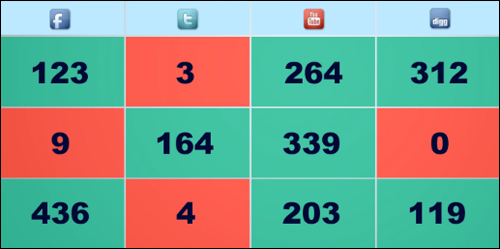 Social recommendations like Twitter mentions and retweets, Facebook likes, etc. are called social signals.
Social recommendations like Twitter mentions and retweets, Facebook likes, etc. are called social signals.
With the rising importance of social sites like Facebook and Twitter, search engines have started taking into account social signals when determining a website’s ranking.
![]()
Note: Google encourages website owners to build their brand on social media as a long-term investment to drive qualified traffic, instead of aiming for short-term benefits like search ranking placement. Matt Cutts, the head of Google’s web spam team has stated that Google takes a cautious approach when it comes to assessing social media signals, as social trends and relationships can change at a moment’s notice. Without a perfect ‘map,’ Google is understandably reticent to assign more importance to social signals over other aspects of their search algorithm. In summary, Google’s strategy is a sensible one - “wait and see” how things develop over time, as sites that provide real value develop longevity, trust and authority, and these are the sites that Google naturally wants to ascribe higher search rankings to.
Social Signals – Which Sites Matter?
Social media sites that search engines like Google look to for measuring social signals include:
With almost 2 billion monthly active users, Facebook is the most dominant social community on the planet. It has been estimated that one great post can reach over 100,000 users, so even if no one seems to be buying your products or services on Facebook, you should not be quick to dismiss the power of leveraging Facebook, as Google processes data and information from Facebook to help determine your search rankings. In fact, Facebook seems to have the most influence on search engine rankings of all social media sites.
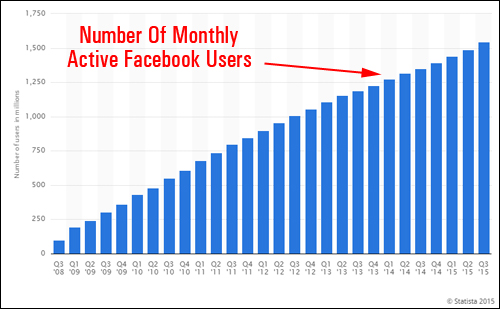
(Number of monthly active Facebook users. Source: Statista.com)
After Facebook, Twitter is the next biggest social media site in the world, with over half a billion tweets sent out each day. Twitter has a significant amount of influence on the cybersphere and places great emphasis on tweeting posts that provide value to readers over the amount of tweets sent …
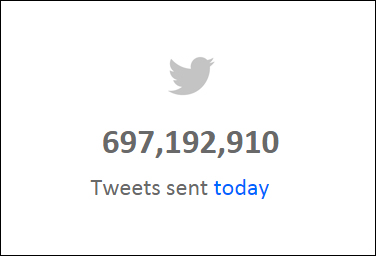
(Over 500 million tweets are sent each day. Source: InternetLiveStats.com)
Google Plus
Google’s own social site naturally carries a significant degree of authority online, even if it has not reached the same level of growth and take up as Facebook and Twitter.
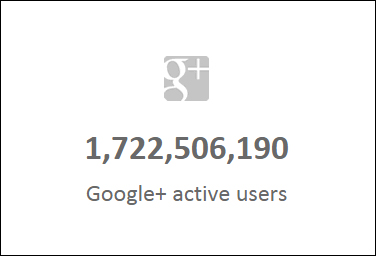
(More people are interacting socially on GooglePlus every week. Source: Internet Live Stats)
In addition to the big 3 listed above, there are a number of other social sites worth paying attention to, such as Pinterest, LinkedIn, StumbleUpon, Digg, and Reddit.
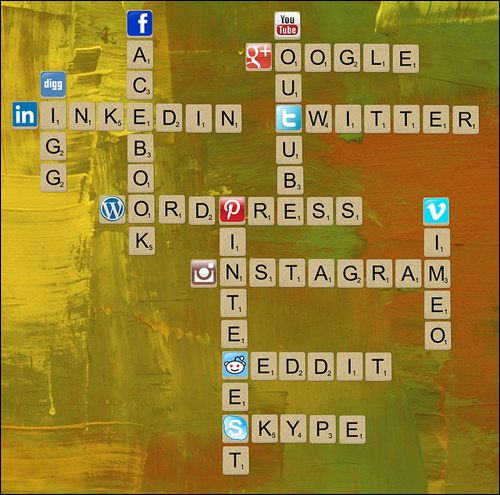
(Social media sites provide important signals that could affect your search rankings)
Social Signals – Which Ones Should You Pay Attention To?
Social signals tracked by search engines like Google and Bing include the following:
- Facebook – e.g. how many Facebook comments, likes, and shares a person has, growth rate of likes and shares, etc.
- Twitter – e.g. how many tweets and retweets your URL has, how influential the person sending a tweet is, trending topics, etc.
- GooglePlus – e.g. who is following you (influential users), how many followers on GooglePlus your URL has, number and authority of +1s, etc.
- Other sites – e.g. number of Pins and re-Pins on Pinterest, upvotes on Reddit, etc.
- Not so obvious signals – In addition to the above, there are other not so obvious signals that can influence search traffic and rankings. These include desirable and undesirable factors, such as links from authority sites (backlinks) (not as influential as they once were, but still a factor) [positive], and whether your site is deemed to be irrelevant by site reviewers [negative].
As a business owner, it’s important to not only grow your social media presence, but also to be able to monitor and analyze your social signals in order to improve your business results.

(Use social media to help improve your business results)
Social media monitoring allows you to find insights into what people are saying about your products, brand, or company on social media, be alerted to impending crises, spy on the competition, measure the impact of campaigns, and identify opportunities for engagement. Additionally, monitoring social media can also provide you with vital data about emerging trends and what consumers and clients are thinking about specific products, topics, businesses, or brands.
As a tool for business intelligence, social media signal monitoring is invaluable. Using social media monitoring as a form of business intelligence, however, is a complex undertaking, typically carried out by a cross-section of people including market researchers, marketing teams, PR companies, social media marketing agencies, sales teams, and social engagement and community personnel. Typically, many small businesses do not have the budget to pay a social media monitoring service to continually track their coverage in the and actively monitor their digital reputation.
Fortunately various service providers have made available affordable tools and solutions to facilitate the active tracking of a variety of social media channels, enabling companies to track what is being said online about their products or brands allowing them to respond to conversations and interact with online users in various social media platforms.
![]()
We have written a detailed article listing a number of social media measurement tools that will help you manage, measure, and analyze your social media marketing campaigns. To learn more, visit this page:

(Can you measure your social signals effectively?)
In this article, we explore a simple, yet highly effective plugin for WordPress-driven websites for tracking social media signals and increasing your social media presence.
Let’s Review …
SocialMetricsPro – Social Analytics For WordPress
Description
SocialMetricsPro is an easy-to-use social analytics WordPress plugin that is designed to make growing your social media influence uncomplicated. It is built on a simple premise – Social Metrics Pro tracks and measures how each signal is performing and displays either a green or red indicator. The user’s objective is simple … change all red squares into greens.
(A system that anyone can operate … turn reds into greens!)
Colors indicate relative popularity. Posts with the highest number of shares show up green. Posts with low social media activity show up amber and red.
The developers of Social Metrics Pro tested their plugin on a network of 2,000+ sites over a period of three months. During this period, all they focused on was turning the “reds” to “greens” and then keeping everything “green”. From these tests, they noticed that their top 10 best performing sites saw an improvement of up to 360% more traffic, 410% more keywords ranked in the first page of Google and they also experienced a 310% increase in revenues.
(According to SocialMetricsPro developers, improving your social media marketing campaigns can result in higher search engine rankings, more traffic and increased revenue!)
For more details, visit the plugin site here:
Plugin Benefits
Here we have listed just some of the many benefits and advantages of using Social Metrics Pro to track Tweets, Likes, +1s, Pins and more directly from your WordPress Dashboard on your site:
Quick And Simple To Install And Set Up. Be Up And Running In No Time.
SocialMetricsPro is really easy to install. Simply upload the plugin file to your Plugins folder via your WP admin user account and activate.
Really Simple To Use
As mentioned earlier, your objective is to change all reds into greens. The plugin tracks and measures social signals so you know where to invest more effort and which social marketing campaigns need to be better optimized.
Track Social Signals You Care About
Social Metrics Pro provides a powerful dashboard to track and monitor social activity from social media networks like Google+, Facebook, Twitter, StumbleUpon, Pinterest, Digg, and LinkedIn directly from your WordPress dashboard.
Social Metrics Pro lets you easily answer questions like:
- Which social networks work best for my site?
- Which social campaigns are performing the best on these social networks?
- Which of my posts are the most popular?
- And more …
With SocialMetricsPro, all this information can be accessed with just one click.
(Social Metrics Pro actively tracks the sites that you care most about!)
Product Features
Social Metrics Pro offers web site owners with many unique features. Below we have listed just a few of these:
- Quick and easy to install and use. Ready to go to work in minutes.
- Widgets And Extensions Ready. You can extend the plugin’s functionality using external and built-in widgets. View the latest stats right on your WordPress dashboard, display social content on your sidebar or anywhere on your site using widgets.
- One-click updating. Update Social Metrics Pro in one click via the WordPress Updates page, or update it manually. You can also choose to receive email notifications whenever new versions are released.
- Minimal hosting resources consumption. Reporting is in seconds, using minimal server resources. The tool also displays the amount of time it took to retrieve the information and the server memory consumed when gathering the data.
Additional features include:
- Sort, Search And Filter Features: Social Metrics Pro allows you to sort and filter the data however you like. You can perform keyword searches to study topic-related posts, and even filter the results by post type, post authors, publishing date, or by category.
- Export Data: You can export data to Excel for further analysis. Data can be exported in tab-delimited and comma-separated file formats, and imported to Excel or the spreadsheet application of your choice.
(Social Metrics Pro is simple to use … just change all the red squares into greens!)
Feedback From Customers
Here are some of the testimonials and comments customers have submitted regarding SocialMetricsPro:
”As with any cool plugin, it solves a very simple problem – how to view how well your WordPress posts are being promoted.” Adam Small, Marketing Tech Blog
***
”If you can’t measure it, you can’t improve.” Goes one of the most important sayings in business. And this is particularly true for tracking of your social mentions I found. There were two things that helped me a great deal to increase sharing after installing Social Metrics: First, I was able to see that some of my articles would perform much better on networks I wasn’t particularly using, such as StumbleUpon for example. Secondly, I could filter out the best performing content more easily and analyse what makes my readers share. Since then I have focused strongly on producing and replicating those posts that performed best.” Leo Widrich, Co-Founder of Buffer
Social Metrics Pro – Tips
A practical, step-by-step guide containing useful advice on how to optimize your social media strategy (i.e. how to turn reds into greens) is also included.
Social Metrics Pro Support
The plugin is well-supported, and users get lifetime software updates and new releases for free with their purchase, backed by a risk-free, sixty-day, complete refund guarantee.
Software Pricing
SocialMetricsPro plugin is available in two editions:
- Single Site Licensing – This lets you install Social Metrics Pro on a single web site. Includes free lifetime upgrades and free support. Price = $27.00 (one-time).
- Unlimited Sites License – This license option lets you run Social Metrics Pro on multiple sites that you own. Includes free lifetime upgrades and support. Cost = $47.00 (one-time).
Note: Current pricing for the product can vary, depending on whether there are any promotions or limited-time special offers. When we last checked, the plugin is being retailed for the amounts shown above. This may not be the actual price set by the plugin developer when you visit the product site and there may be additional upsells or one-time offers after your purchase.
Check the plugin’s website for current pricing details:
Additional Information
SocialMetricsPro requires a self-hosted installation of WordPress and can be instantly downloaded after purchase.
Get This Plugin
As mentioned earlier, with the rising importance of social sites like Facebook and Twitter, search engines have started taking into account social signals to help determine website ranking.
No website owner can afford to ignore the importance of social media. SocialMetricsPro solves the problem of how to find a simple, time-saving solution that gives website owners immediate feedback on the success of their social media marketing campaigns and guides them how and where to direct their efforts in order to improve their results.
SocialMetricsPro is an ideal tool for beginners and advanced users alike. It tracks Tweets, Likes, Pins, +1s and more right from your WordPress dashboard.
We recommend getting Social Metrics Pro if you own or manage WordPress sites and want to avoid wasting resources on over-optimized networks.
For complete details, check out the plugin here: Social Metrics Pro – Social Analytics Plugin
***
***
